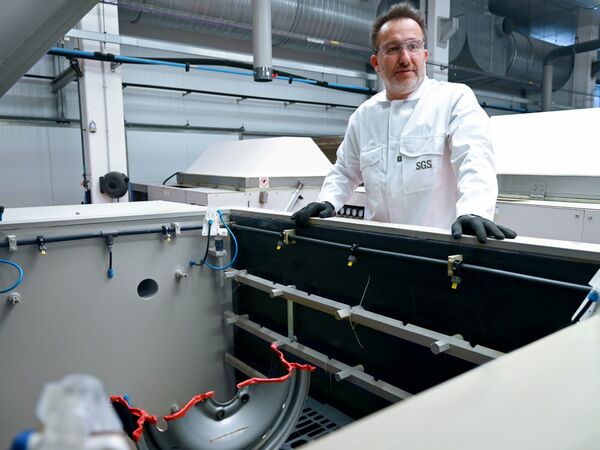


If a product or one of its components has failed, the cause of the failure must be diligently elucidated through appropriate investigations. In addition, measures must be taken to prevent future failures. With our services in failure and damage analysis, which we have been providing at the Herten site of SGS INSTITUT FRESENIUS GmbH for more than 25 years, we support you in clarifying the cause as well as in determining suitable remedial measures.
Our employees have extensive, cross-industry experience in damage analysis on almost all products, components and materials in the automotive industry.
To ensure that the clarification of a damage case remains the exception, quality assurance and release testing are top priority. Here we offer complete solutions in accordance with the applicable standards and OEM specifications.
Our experts at the Herten site carry out systematic damage analyses. This is carried out in several steps:
Afterwards, we are also happy to support our customers in the implementation of short-, medium- and long-term remedial measures.
In addition to uniformly erosive corrosion, localized corrosion phenomena often occur, such as trough-shaped corrosion, pitting corrosion and various forms of selective corrosion (e.g. intergranular corrosion). Stress corrosion cracking and vibration cracking can occur in the simultaneous presence of mechanical loads.
We investigate the corrosion damage, characterize the type, cause as well as the effect of a corrosion attack and support you in introducing appropriate protective measures against future corrosion by selecting suitable base materials or coatings.
Important conclusions about the damage mechanism can be drawn from the surface structure of the fracture surface. Depending on the mechanical stress, a distinction is made between force fractures caused by static or impact stress and fatigue fractures, which develop as a result of a cyclically changing load.
We characterize the morphology of fracture surfaces in metallic, polymeric and ceramic materials and support you in introducing measures to prevent damage caused by material fractures in the future.
Coatings are generally applied to surfaces of metals or plastics via coating processes such as electrodeposition processes, special gas deposition processes (CVD, PVD) or painting processes. Influencing variables such as coating thickness, coating homogeneity, the crystalline structure of the coating and the substrate as well as the topography have a significant impact on the quality of coating systems.
We determine for you the cause of failure of functional or decorative coatings on metallic and polymer materials. We have all the necessary surface analysis methods at our disposal for this purpose.
If damage occurs to plastic parts despite intensive quality assurance measures, the number of units affected is often very high, which makes it necessary to clarify the cause of the failure immediately.
In order to investigate cases of failure in plastic parts, we take an in-depth look at the material and its manufacturing process and define the analytical procedure to determine the cause of the damage.
We determine the cause of failure of assemblies and their passive or active components. We evaluate printed circuit boards and assemblies according to IPC regulations, carry out quality-accompanying investigations in destructive physical analysis (DPA) or deal with aspects of innovative assembly and connection technology.

In addition to our projects in failure and damage analysis, selected routine services in quality assurance and release testing are also provided at the Herten site for our customers in the automotive, aerospace, marine and mechanical engineering industries.
For this purpose, our laboratories are equipped with state-of-the-art analytical methods:
All services and all standards according to which we test can be found in our service catalog.
Our laboratories are accredited according to DIN EN ISO/IEC 17025 and have decades of experience in the automotive sector. As part of the globally active SGS network of experts, we provide services for the international automotive industry.
The SGS Automotive Testhouse is listed with all well-known automotive manufacturers, and offers coverage of complete test programs according to delivery specifications.
Automotive Testhouse
Am Technologiepark 8
D-45699 Herten